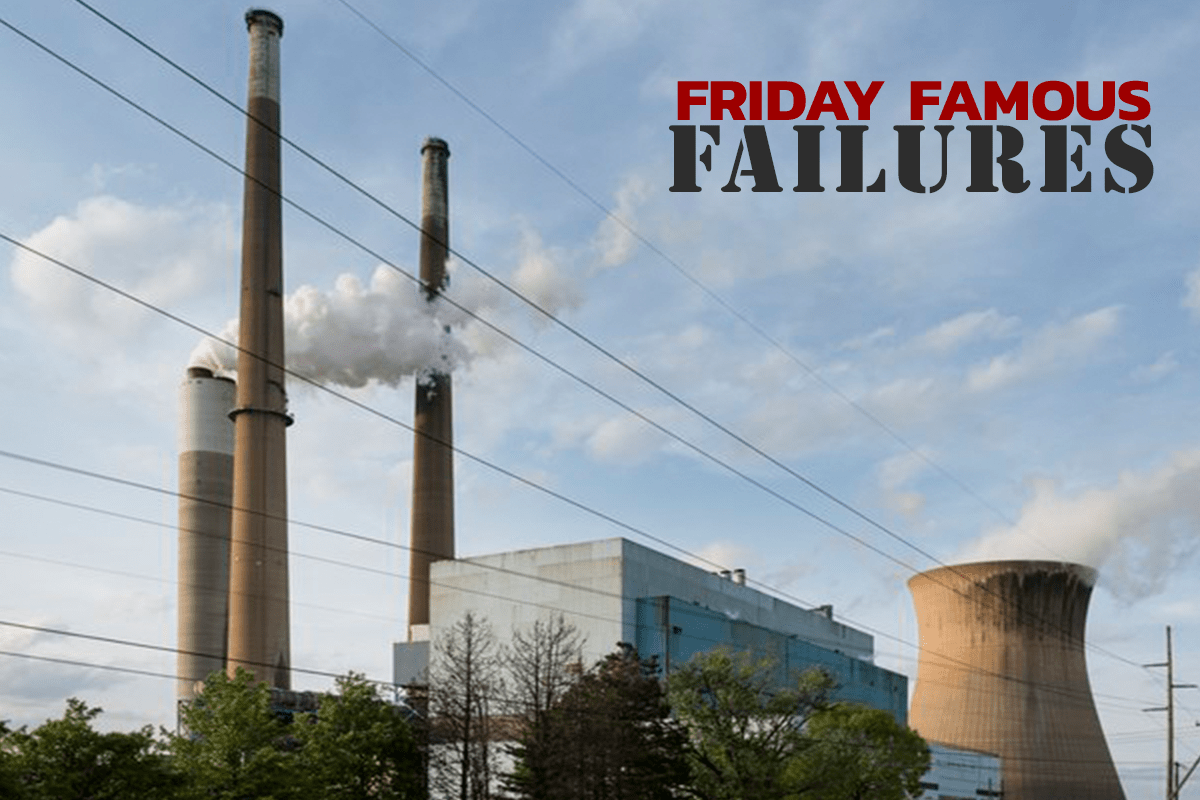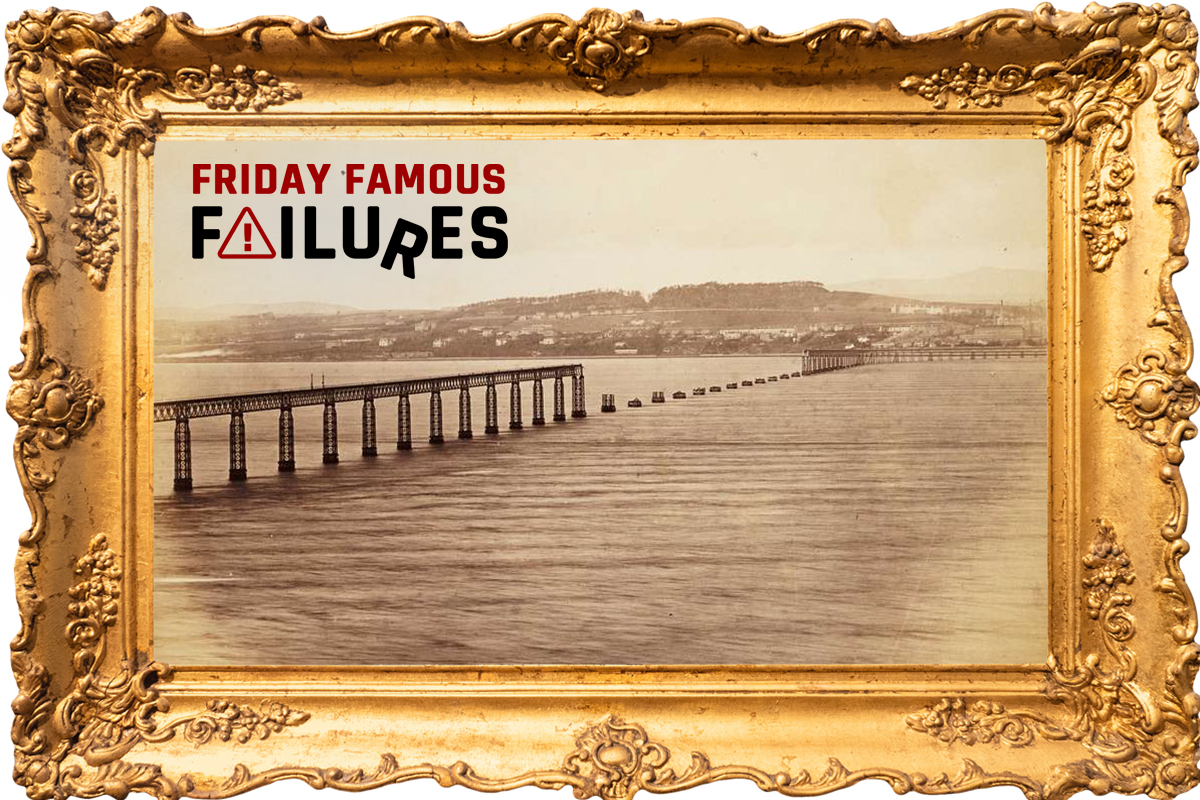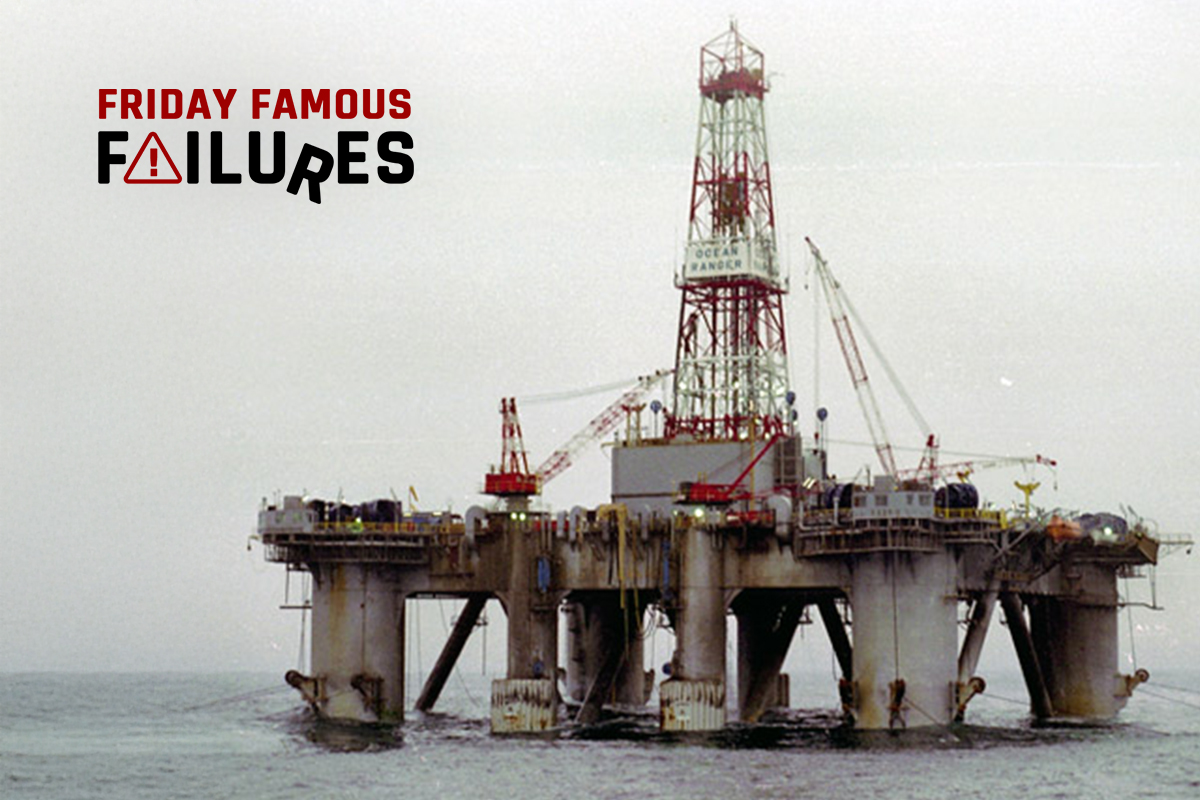In the 1970s, power companies began building many new coal-fired electrical power plants in the Ohio Valley to feed the growing industry in that region. These power plants were close to coal mines, so the electricity they generated was less expensive than nuclear or hydroelectric. One such new power plant was to be built on Willow Island, West Virginia.
Around 10:00 a.m. on 27 April 1978, workers engaged in the building of the second 430-foot concrete cooling plant began hoisting their third load of wet concrete from the ground to the work platform, 166 feet in the air. Without warning, the top of the partially constructed tower collapsed into the center of the tower, killing 51 construction workers. A worker on the ground near the tower, who helped in the rescue effort, told newspapers, “I looked and it was gone. The scaffolding was just gone.”
To date, the partial collapse of the Willow Island Cooling Tower is considered the worst construction accident in the United States. Why did it occur?
What Caused this Disaster?
Use of concrete with insufficient compressive strength. The builders used concrete to support the scaffolding system of the cooling tower, but began subjecting it to the load of tower construction, including the dynamic loads of hoisting operations, only 18 hours after it had been poured. Subsequent reports estimated the insufficiently cured concrete had a compressive strength of 220 pounds per square inch (psi), where the required mechanical strength to support the construction of higher tower sections was calculated (after the accident) to be more than 1,000 psi. In any case, the builders should have planned to provide a safety factor of two in their design – meaning they should have let the supporting concrete of the lower portion of the tower cure until its compressive strength was over 2,000 psi.
Missing bolts/bolts too weak for the load. The traditional method of construction was to base the scaffolding on the ground and build it up to keep up with the height of a structure, but the building plan of the Willow Island cooling towers was to bolt the scaffolding required for each higher section of tower to the concrete tower structure below. An investigation by OSHA after the disaster found that there were bolts missing from the scaffolding (which also supported the crane that collapsed) and that the bolts used had insufficient strength to secure the scaffolding to the concrete.
Moving the anchor point for the static line. The hoisting system for lifting concrete to construct higher portions of the tower uses a static line running from the load to the ground. The static line keeps the load from swinging and, by requiring an extra pulley for routing the line, assists in lifting by reducing the mechanical force needed to raise the load. The static line runs through an anchor point on the ground, from which it is pulled to lift the load. Initially, the anchor point was close to the base of the tower (i.e., the static line was nearly vertical), but was moved for construction convenience away from the wall to the center of the cooling tower, creating a side-force on the gantry that helped collapse the tower. The subsequent accident report notes,
If the base anchor point of the static line had been kept at its previous location (before the last move to near the center of the tower), the effects of the construction loads would have been reduced to such an extent that the failure of lift 28 of the tower would probably not have occurred.
No person or group was responsible for safety at the site. The construction plan was to support the construction equipment, which included concrete forms for higher sections of the tower, lifts for raising concrete, and the workmen, on the already-built lower sections of the wall. However, the builders never specified either how long the concrete sections had to cure or how much tested strength was required before work could begin on the higher sections of the tower. Although a testing company on-site performed mechanical tests on the concrete, “nothing in their contract would seem to indicate they would have any authority to shut the job down if they found problems,” as reported by a Governor’s Commission. The commission further reported, “there were no inspectors or supervisors of any kind on the job whose responsibility it was to check the work to make the determination either to proceed with the work or give the concrete more time to gain strength.”
Lack of training for construction workers. The builders provided no training in what, for many construction workers, was a new kind of construction system. Using already-constructed sections of the tower to support higher scaffolding was common on steel-framed buildings but relatively uncommon on concrete buildings. The Governor’s Commission commented, that because of the word-of-mouth training that is a natural part of the work environment and because there were no written specifications available for reference, workers could inadvertently make gradual modifications that might compromise the design and cause conditions beyond the limitations of the materials.
Some of the inadvertent modifications that helped cause the collapse included the moving of the anchor point of the static line, as the tensions of various loads helped maintain the strength of the scaffolding.
Effects of the disaster
During the hoisting of the third load of concrete to the construction site 166 feet above the ground, the static line suddenly and ominously went slack. The gantry then fell off the top of the tower into the center, and the concrete tower section poured the previous day started collapsing; the whole tower section began “unwrapping” off the tower. The metal scaffolding, the wooden cranes, and the most recently poured tower section all fell as a jumble into the center of the tower. All 51 construction workers on the tower itself died during the collapse.
Immediately after the disaster, the remaining workers on the site rushed to dig for their colleagues. Fire departments from five surrounding municipalities were called in to assist in rescue efforts, and one nearby fire department’s garage was turned into a temporary morgue. Many of the workers who died could only be identified by the contents of their pockets, and one of the workers was never found.
There were multiple investigations after the disaster. The Governor’s Commission focused on the safety culture, noting the lack of worker training as well as the lack of management and technical supervision. An investigation by the Occupational Health and Safety Administration (OSHA) identified mistakes in construction technique, particularly emphasizing that the concrete was not allowed to cure and the bolts securing the scaffolding were too weak (and some were missing).
On 8 June 1978, OSHA issued the construction company a “knowing and intentional” violation of safety practices citation “for failure to make field tests on field-cured concrete specimens to ensure that the concrete had attained sufficient strength to safely support the load prior to removal of the forms.” The citation was settled for $83,000.









As project manager on slipform & jumpform chimneys and silos I insist on US made bolts with certs and delivered in sealed barrels and boxes. On concrete I pick the supplier, mix and admixtures, tester and use appropriate cold and hot weather protection. These are not items I looking to save money on.
These form systems are well thought out and have plenty of capacity but must be monitored for shortcuts that can not be tolerated.
Don’t like my procedures, get somebody else?
I wonder if this accident caused the OSHA “70% percent rule”. You can’t apply any load to freshly placed concrete until it has reached 70% of design strength verified through concrete test cylindres.
Thank you for providing this public service reminder.
It is a reminder to all PEs overseeing any project anywhere: don’t be bullied by cost over-runs, unsafe schedules, etc., if gambling on human life in your domain is being requested of you.
How many practicing PEs are in a life-gambling squeeze on-site, right now?
Risk of loss of PE’s job, for inconveniently standing up for job safety, is always subordinate to the risk of loss of life of others under PE’s supervision.
I worked in William LeMessurier’s office when the Citicorp Building was discovered to be under-designed for wind force by some 40%; LeMessurier sent PEs, sitting right next to me, down to NYC and told them to oversee lateral bracing installations until the Citicorp high-rise was structurally augmented up to code. Bill LeMessurier should be every PE’s model PE for the ethical delivery of design services.
So each deceased workers life was worth about $1630 based on this $83,000 settlement. Hardly nothing, a slap on the hands.
That tragedy back in 1978 was awful, and should have been simply avoided by adequate curing time, sufficient safety factor in stresses. Reminds me of the stopping of construction on a different tower in Cuyahoga Falls, Ohio about 40 yrs ago. The lifts were observed to be weakening before collapse and loss of life. The intended top restaurant for a church was never completed. Still standing, used as a communication tower today.
R. Reid, PE
I grew up near Marietta, Ohio which is about 5 miles from the plant. I still remember when it happened and the effect it had on everyone, although I couldn’t fully comprehend it at the time (I was only 9 years old). The tower remained partially completed for a few years and it was always difficult to even look at it when driving by knowing what had happened there.
I have heard of so many stories like this but less catastrophic that I don’t believe there were any “good old days.”
Old laws, thousands of years ago required the builder’s life if his building killed someone. The only investigation apparently was the body count.
Couple bad practices with all the drinking and ignorance of the 70’s and it’s a wonder there weren’t more events like this—or were there?
Even today I’ve seen job superintendents get angry if they are caught cutting corners on safety. As long as people are involved in any way on projects there will be cut corners. And to think that OSHA couldn’t be part of the problem is another pipe dream.
Simply, Shortcuts to disaster. It still is not unusual to find a lack of good safety measures during the construction of an engineering project.
Not to put too fine a point on all this, but my instinct is telling me that the construction company used was the lowest bidder.
I forgot to mention on my previous comments that I like to use maturity monitors in my concrete gravity structures. Today they can be read on your cell phone and are dirt simple.
These structures should be built in warm weather but often get dragged into winter due to schedule glitches on the rest of the plant. At this point the concrete/forms have to be kept warm for a couple of days and is possible and very labor and energy intensive.
My Father, Richard Swick was killed in this accident. I cannot tell you the devastating effect this loss and this event had on my life. I was 17 at the time and am now 60, it’s still very difficult. Thank you to those saying safety above all else. I wish there had been more people with that mind set on the job that day.